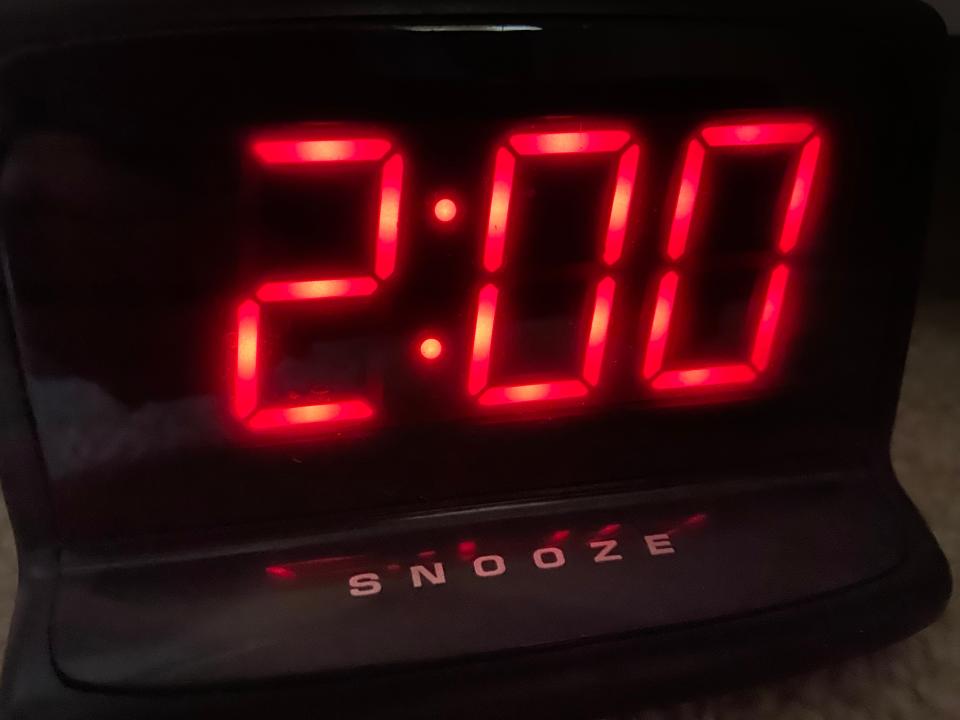Daylight saving time begins, ends at 2 a.m. From Florida to California, we still fall back
You can’t go back in time. You can’t freeze time. You can’t speed up time. But you can prepare for the effects of a time change.
This is especially true for daylight saving time. But why do the clocks (wall clocks and almost all electronic devices) change at 2 a.m.? And why is it always 2 a.m. on a Sunday in the fall and spring? Let us explain.
When do we change clocks for daylight savings 2023?
Daylight saving time 2023 officially ends in November. At 2 a.m. ET on the first Sunday after Halloween, we'll set our clocks back by one hour — unless you live in a state or area that does not observe daylight saving time (see below).
Why do we fall back, spring forward for daylight saving time?
According to timeanddate.com, "daylight saving time is the practice of setting the clocks one hour ahead of standard time to make use of more sunlight in the spring, summer, and fall evenings. Daylight Saving Time (DST) is used to save energy and make better use of daylight. It was first used in 1908 in Thunder Bay, Canada."
Who’s in charge of daylight saving time?
Daylight saving time became a national standard in 1966 when President Lyndon B. Johnson signed the Uniform Time Act, which was established as a way to continue to conserve energy. The thinking was, if it's light out longer, that's less time you'll need to use lights in your home.
The U.S. Department of Transportation oversees the nation's time zones and the uniform observance of daylight saving time, according to transportation.gov. The oversight of time zones was assigned to the DOT to help keep track of transportation. The DOT manages daylight saving time and cites energy reduction and reduced crime as reasons for the time change.
Did we get rid of daylight saving time? Will daylight savings permanently end?
The Sunshine Protection Act of 2021 passed the Florida Legislature, but Florida could not implement the law without Congress' approval. It did not pass the U.S. House.
Those who support ending daylight saving time permanently advocate brighter afternoons and more economic activity. In Florida, ending daylight saving time could help tourism, legislators say.
Why do we change clocks at 2 a.m. Sunday for daylight saving time?

At 2 a.m. Sundays, most people are asleep, and that timeframe seems to be the least disruptive — and has been since the late 1800s, early 1900s. The early days of the railroad industry played an important role in timekeeping in the U.S.
While daylight saving time is a means to conserve energy and use more sunlight, DST plays a big role in transportation (see who’s in charge of daylight saving time, above).
According to loc.gov: On Nov. 18, 1883, North American railroads switched to a new standard time system for rail operations, called Standard Railway Time. This helped create the four standard time zones we know today: Eastern, Central, Mountain and Pacific. Though tailored to the railroad companies’ train schedules, the new system was quickly adopted nationwide. Then, in 1918 daylight saving time was introduced.
A 2019 story in Time magazine explains why the changes occur at 2 a.m., "When the country first experimented with daylight saving time in 1918 during World War I, there were actually no trains that left New York City at 2 a.m. on a Sunday.”
Universally, that timeframe made the most sense — changing the clocks at 2 a.m. would not be disruptive. While there have been many attempts to permanently end daylight saving time over the years, there hasn’t been attempts to change what time fall back and spring forward would occur.
Your mobile devices, computers, tablets, smart watches, exercise trackers and digital devices automatically change during daylight saving time.
Which states don’t observe daylight saving time? Does daylight savings still affect them?
Arizona and Hawaii do not recognize DST. There's also no need to change the clocks in Puerto Rico, the U.S. Virgin Islands, American Samoa, Guam and the Northern Marianas.
While these areas in the U.S. don’t observe daylight saving time, they are affected by the time change, specifically for transportation and scheduling.
Sangalang is a lead digital producer for USA TODAY Network-Florida. Follow her on Twitter or Instagram at @byjensangalang. Support local journalism. Consider subscribing to a Florida newspaper.
This article originally appeared on Florida Today: Change clocks for end of daylight savings: Why we fall back at 2 a.m.

